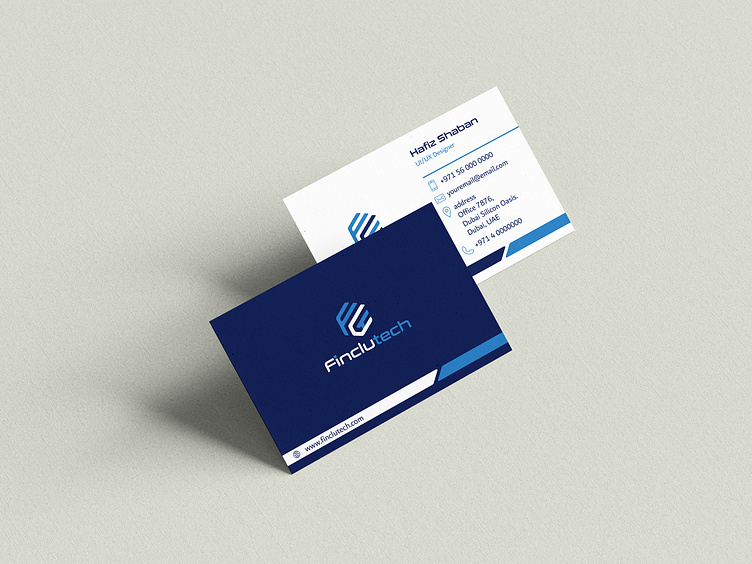Corporate Business Card
How to Design a Business Card
A business card is a small but impactful representation of your brand and serves as a convenient and professional way to provide contact information. Designing an effective business card involves a few key considerations:
Choose the Right Layout Decide if you want a horizontal or vertical orientation. Horizontal cards are traditional and widely recognized, while vertical cards can stand out and feel more modern. Think about your audience and the impression you want to make when choosing.
Incorporate Brand Colors and Fonts Use your brand’s color palette and fonts to ensure consistency with your overall brand identity. This helps recipients associate the card with your brand more readily. Be mindful of color contrasts and readability when choosing font sizes and colors.
Add Your Logo Prominently The logo is the most recognizable part of your brand, so it should be easy to see on the card. Place it in a visible location, such as the top-left corner or center, depending on your design layout.
Include Key Information Make sure to include essential details like your name, job title, phone number, email, and company website. Consider adding your social media profiles if they are relevant to your industry or position. However, avoid overloading the card with text; prioritize the most important information.
Use Quality Materials The feel of your business card also makes an impression. Choose a high-quality paper or cardstock, and consider options like matte, gloss, or textured finishes. Specialty finishes, like embossing, foil stamping, or rounded corners, can also give your card a unique look and feel.
Keep It Simple and Readable Avoid cluttering the card with too much information or complex designs. Simplicity makes your card more readable and professional. Use ample white space to keep the design clean and visually appealing.
Consider QR Codes for Digital Access Adding a QR code that links to your website or online portfolio allows recipients to quickly access more information. QR codes can help bridge the gap between physical and digital networking.
Proofread Thoroughly Ensure there are no spelling mistakes or incorrect contact details. A single typo can make a negative impression, so double-check everything before sending the design to print.
Benefits of a Well-Designed Business Card
Creates a Lasting First Impression A well-designed business card leaves a positive impression. It's a representation of you and your business, making people more likely to remember you after the initial meeting.
Shows Professionalism Business cards show you are prepared and professional. Offering a card when you meet someone shows that you take your business seriously and are committed to networking.
Convenient Information Sharing A business card makes it easy to share contact information. Instead of relying on digital exchanges, a physical card can be handed over in seconds, making it convenient and reliable.
Aids in Brand Building With consistent use of brand colors, logos, and fonts, business cards help reinforce brand identity. Each time someone looks at your card, they are reminded of your brand, which contributes to long-term brand recognition.
Acts as a Marketing Tool A unique, well-designed card can spark conversations and encourage people to reach out. People are likely to show an interesting or visually appealing card to others, expanding your reach even further.
Encourages Personal Connections Exchanging business cards often accompanies a handshake, smile, or personal conversation. These personal interactions help establish connections in ways that digital interactions may not achieve as effectively.
A thoughtful business card design not only makes it easier for people to contact you but also strengthens your brand and creates memorable connections.

